The Schneider 90/4.5 Apo-Componon HM is an enlarging lens that I happen to have lying around from my film days. I remembered it as a great enlarging lens. I wondered how it would perform in a completely different role: as a camera lens. This is asking the lens to perform well outside of its comfort zone. It was designed for reproduction ratios on the order of 8:1, which would be a really tight portrait with the GFX 50R. I’m tested it at a much greater distance, about 12 meters. I also tested it wide open. The full opening was designed to be used for focusing.
First, you might ask how I got the lens mounted to the camera. Here’s how:
The “lens adapter” is a Cambo Actus.
Here’s my test scene:
And here’s a look at the target, with the lens wide open.
In the center:
And in the corner.
You can’t judge light falloff from those because I goofed and used automatic exposure.
Test protocol:
- 12 meters target distance
- ISO 100
- f/4.5
- Subject in the center and the upper right corner.
- Manual focusing.
- Six shots at each setting, focusing anew for each shot, picking the best using the Imatest sharpness ranking utility. This method calibrates out focus curvature.
- Developed in Lightroom
- Sharpening set to zero.
- White balance set to gray background on Siemens Star target
- Adobe Color Profile
- Minor exposure adjustments, with same adjustment applied to all images from both lenses, so corner darkening is unaffected.
- Chromatic aberration correction turned off.
- Everything else at default settings
MTF testing using the slanted edge follows.
In the center:
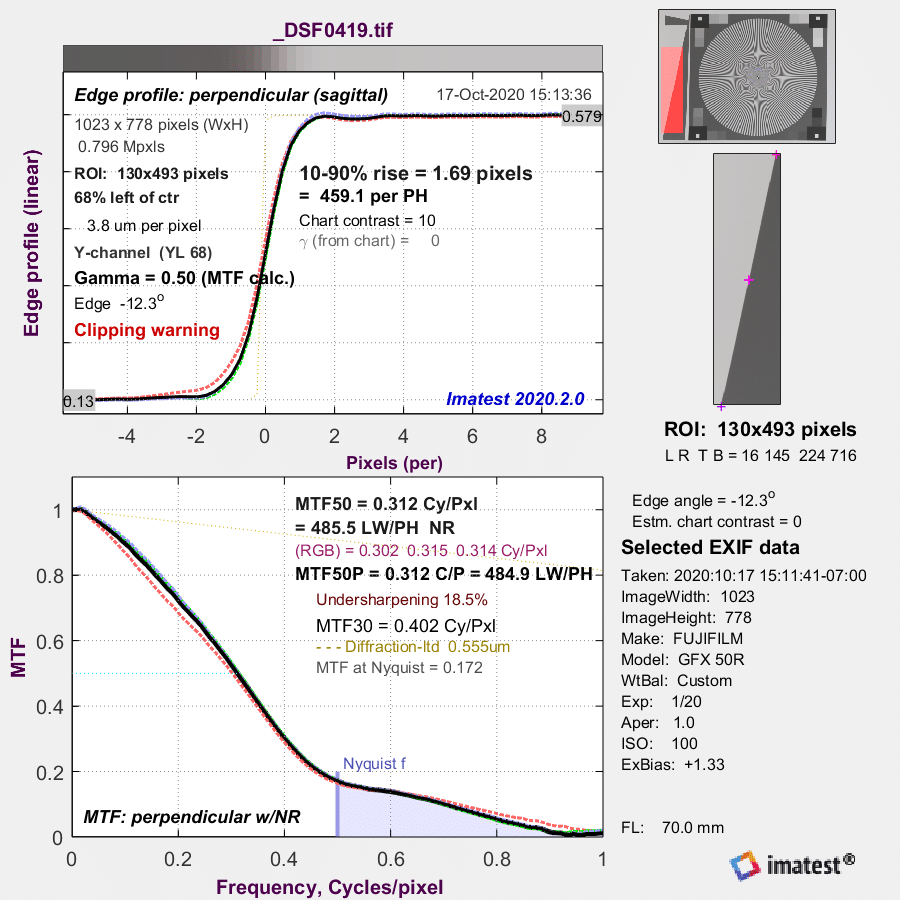
That is quite sharp. Lots of aliasing, thanks to the small pixel apertures on the GFX 50x cameras.
In the corner:
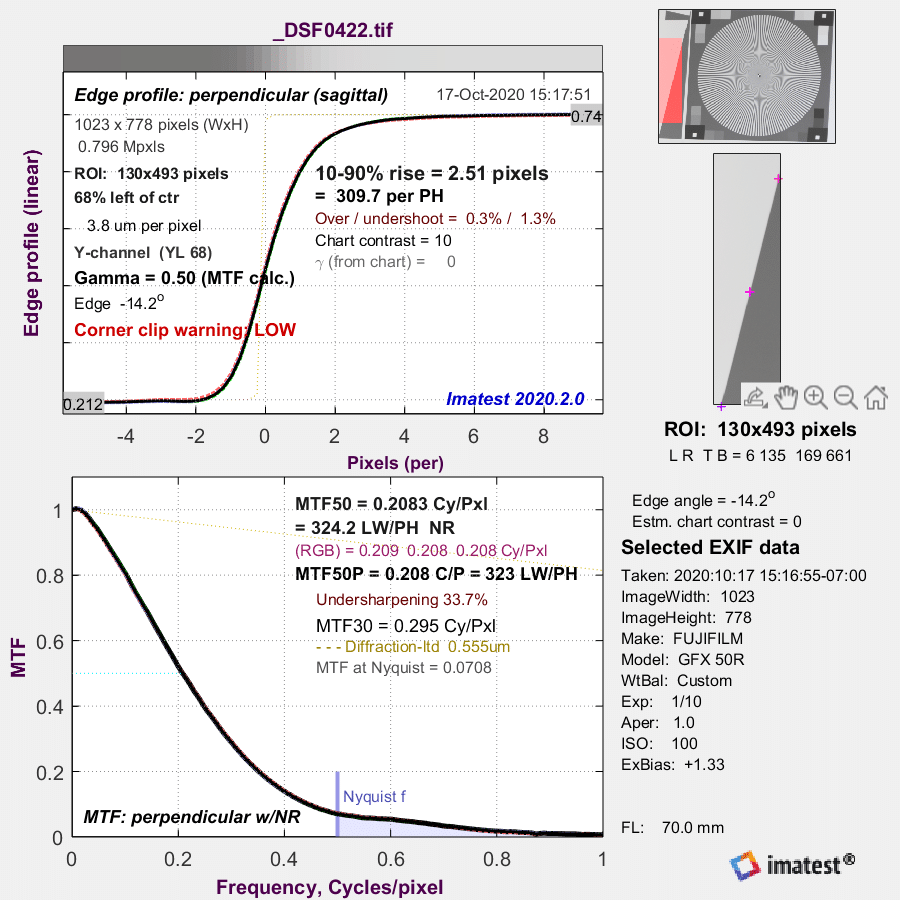
That is still quite sharp. I was hoping for a bit better performance, since the lens was made to cover a 6×6 negative.
Here are the MTF calculations at various angles using the star part of the target:
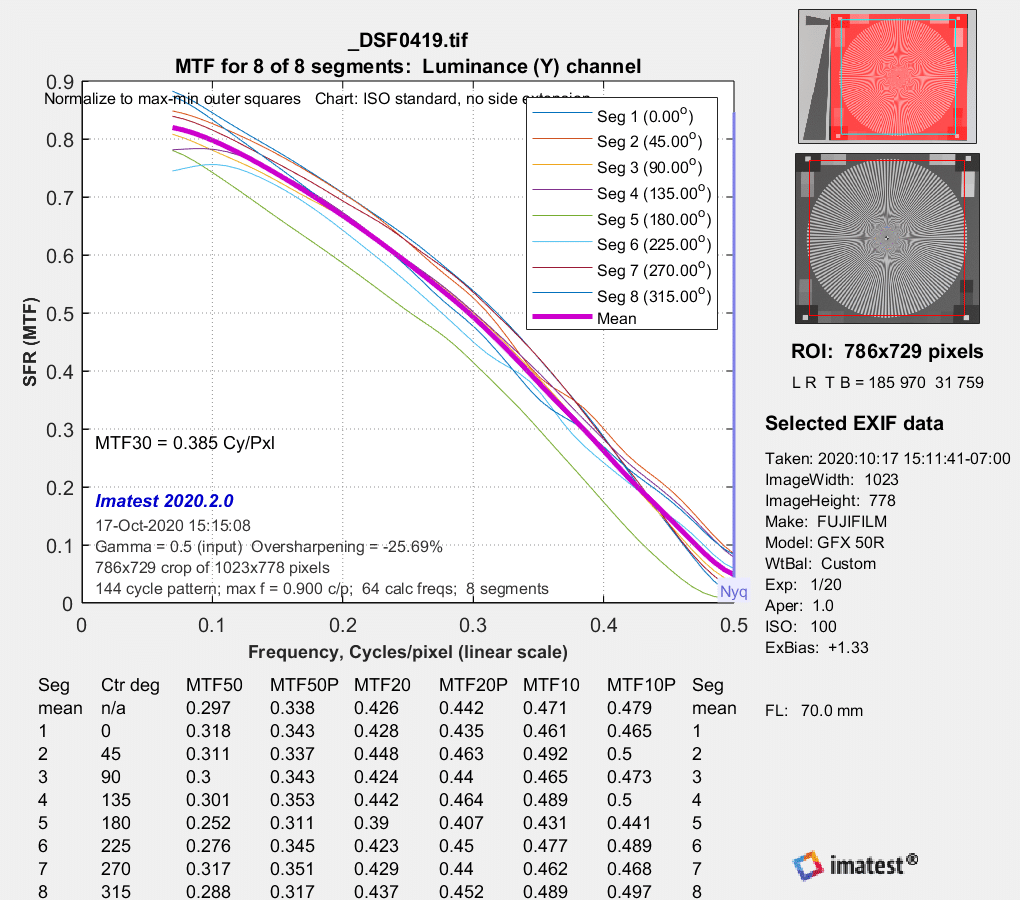
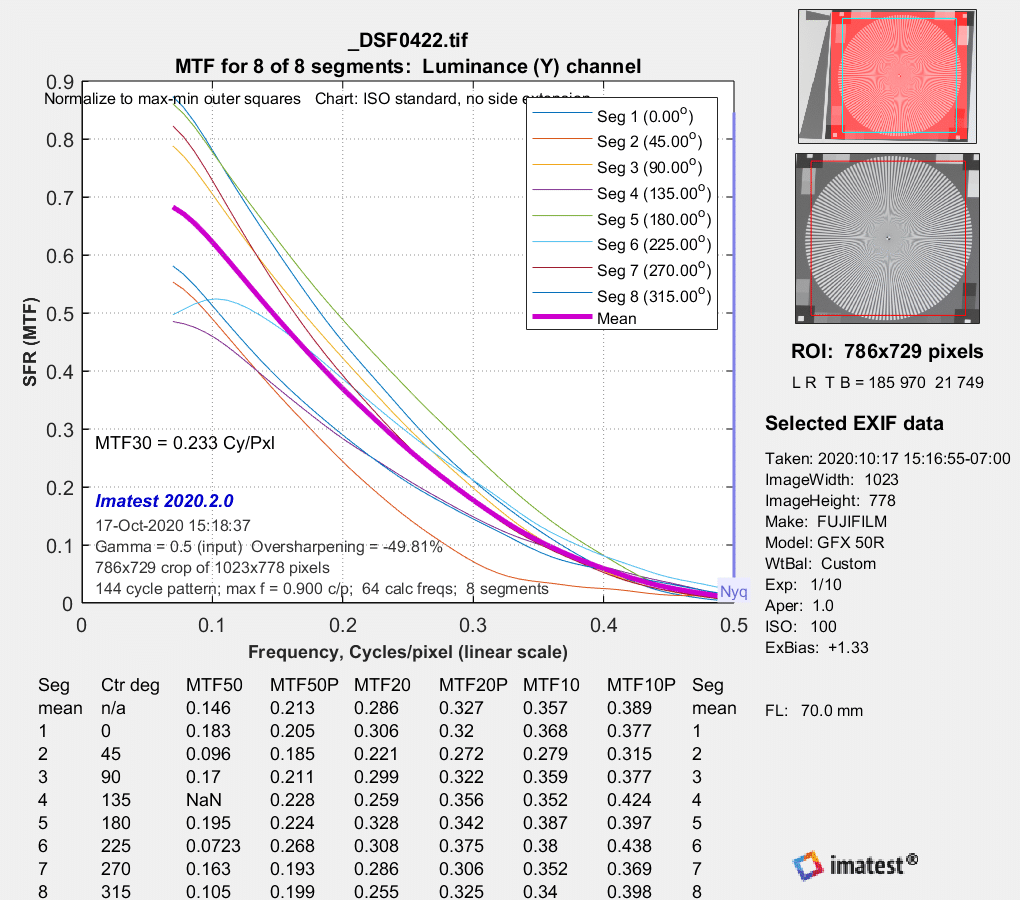
Same data in a spider plot:
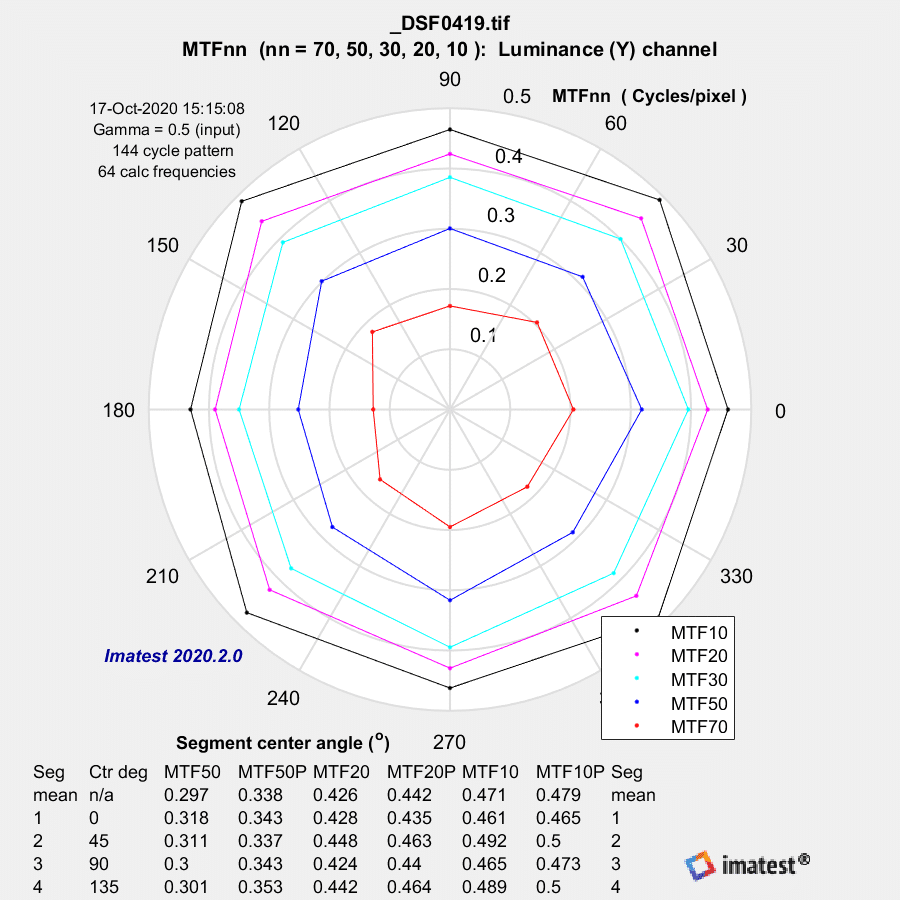
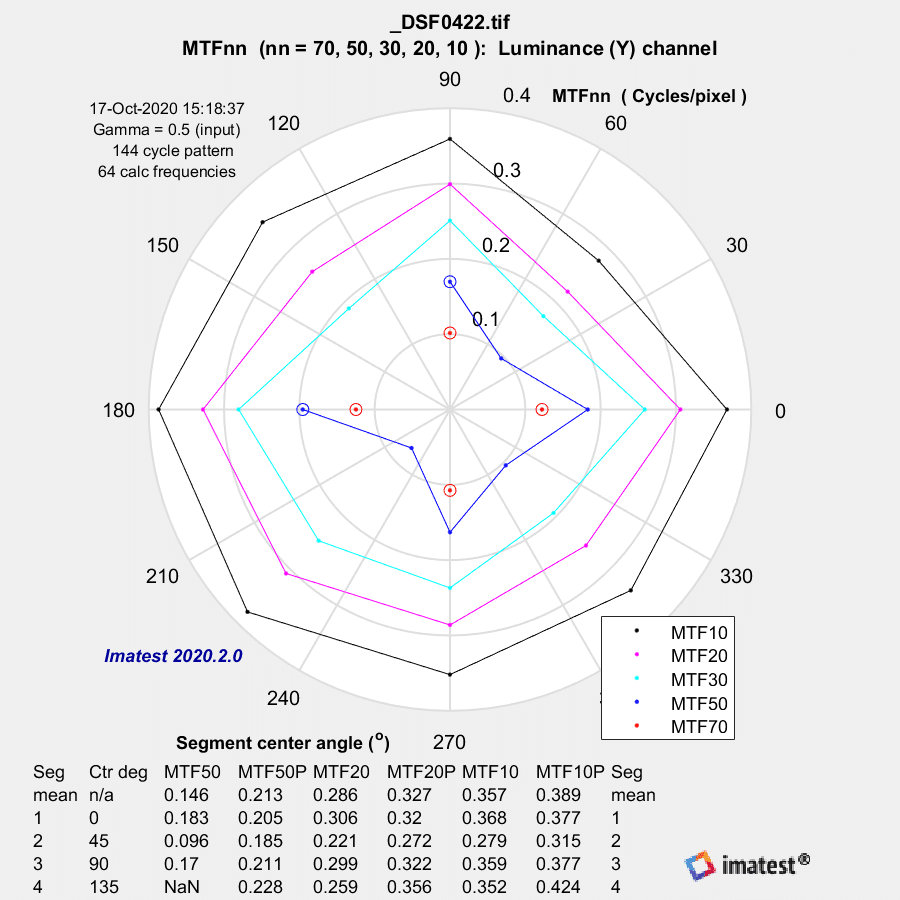
And, finally, a Shannon information capacity plot. I’m still trying to figure out how to use these:
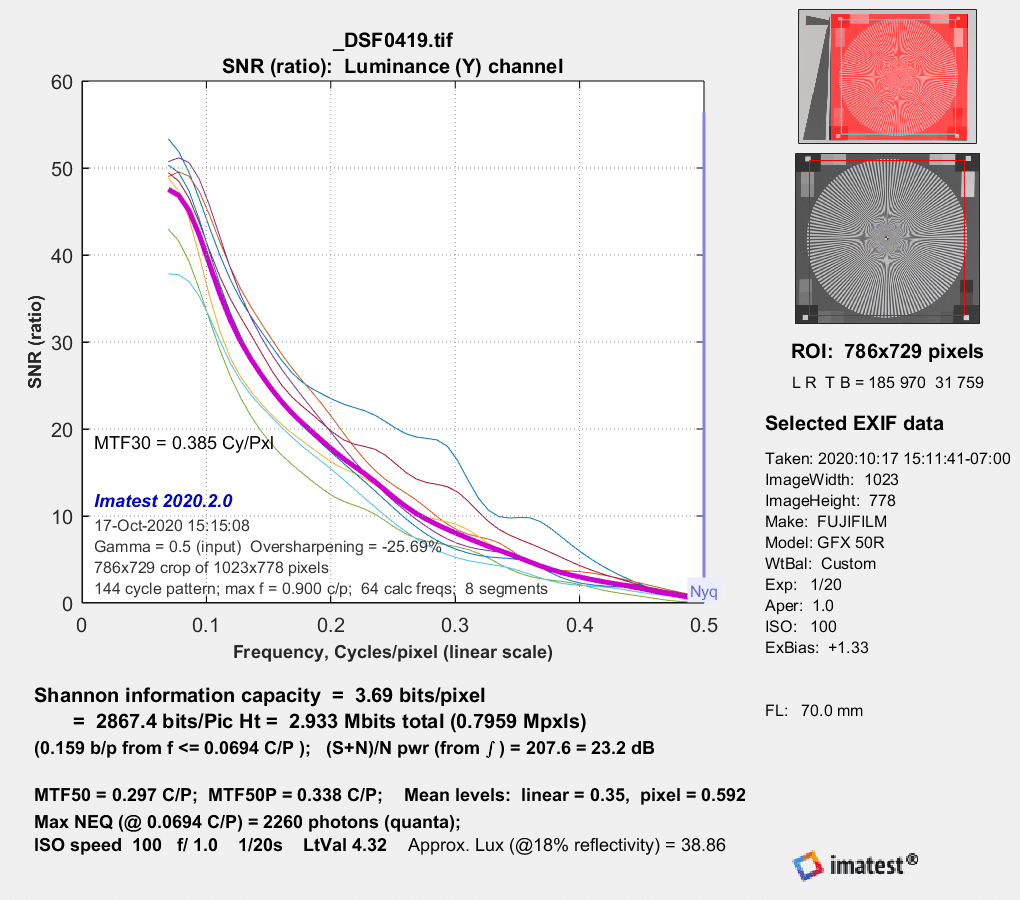

This is good performance, but with respect to the corners, my socks are firmly in place. I’ll try stopping it down a bit.
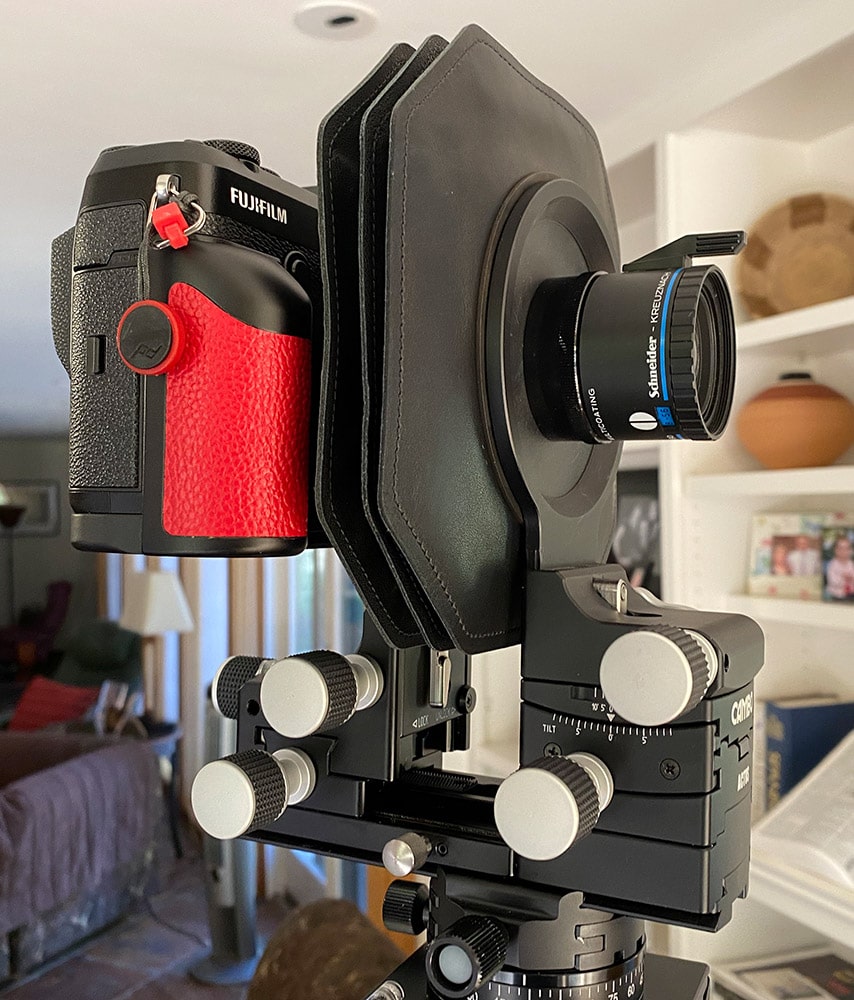
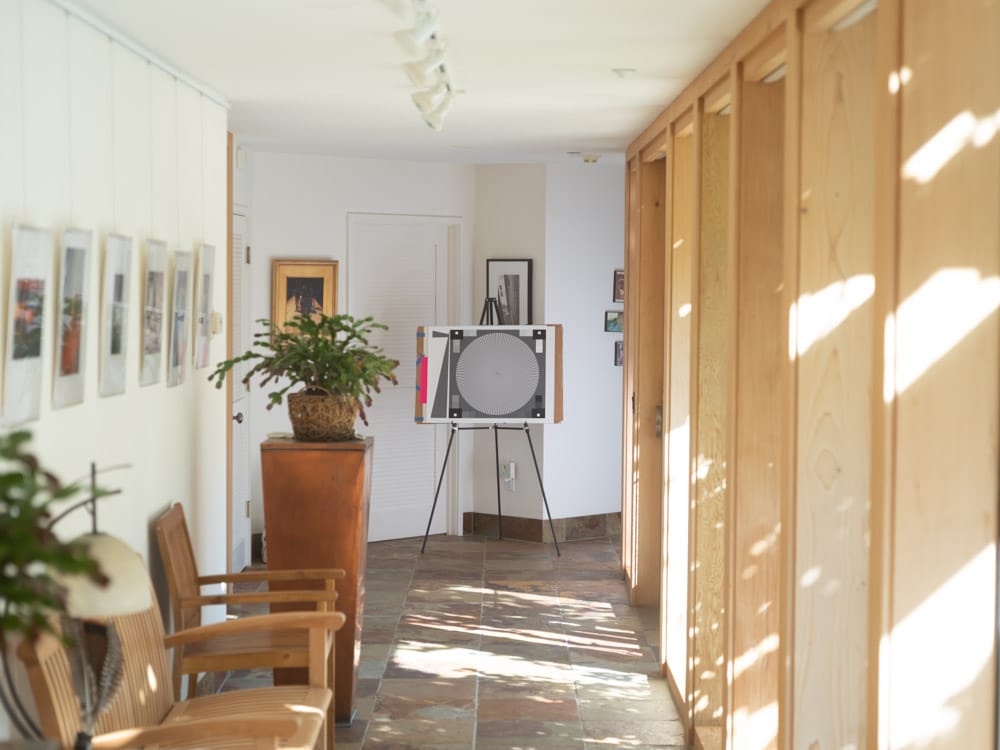
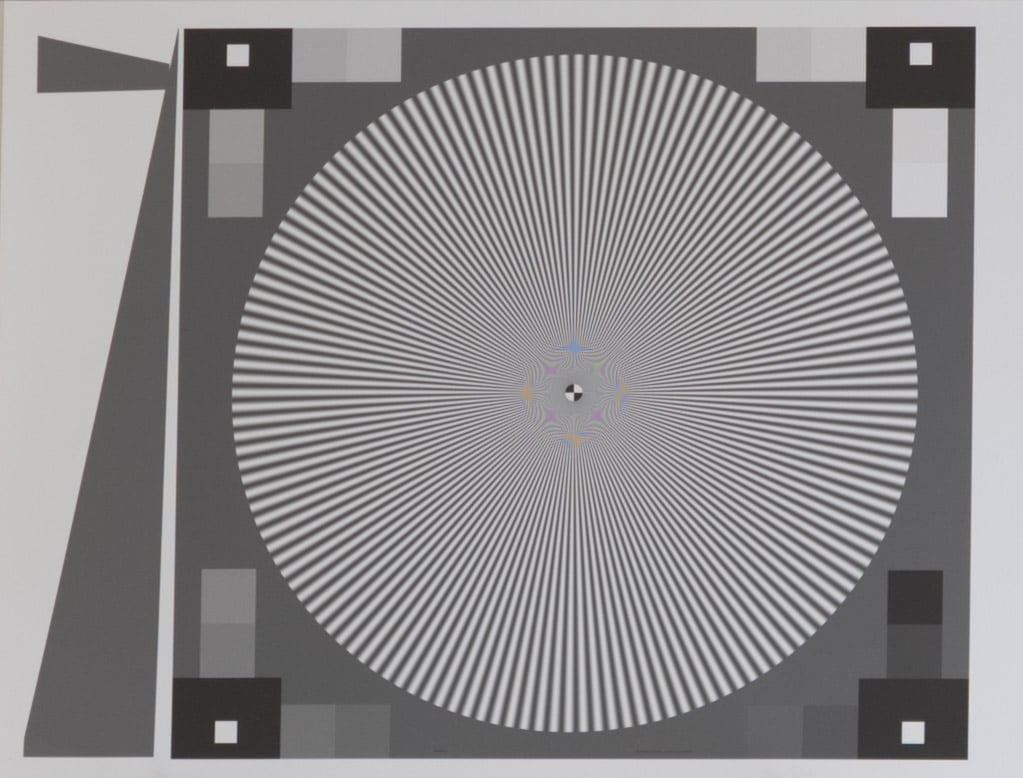
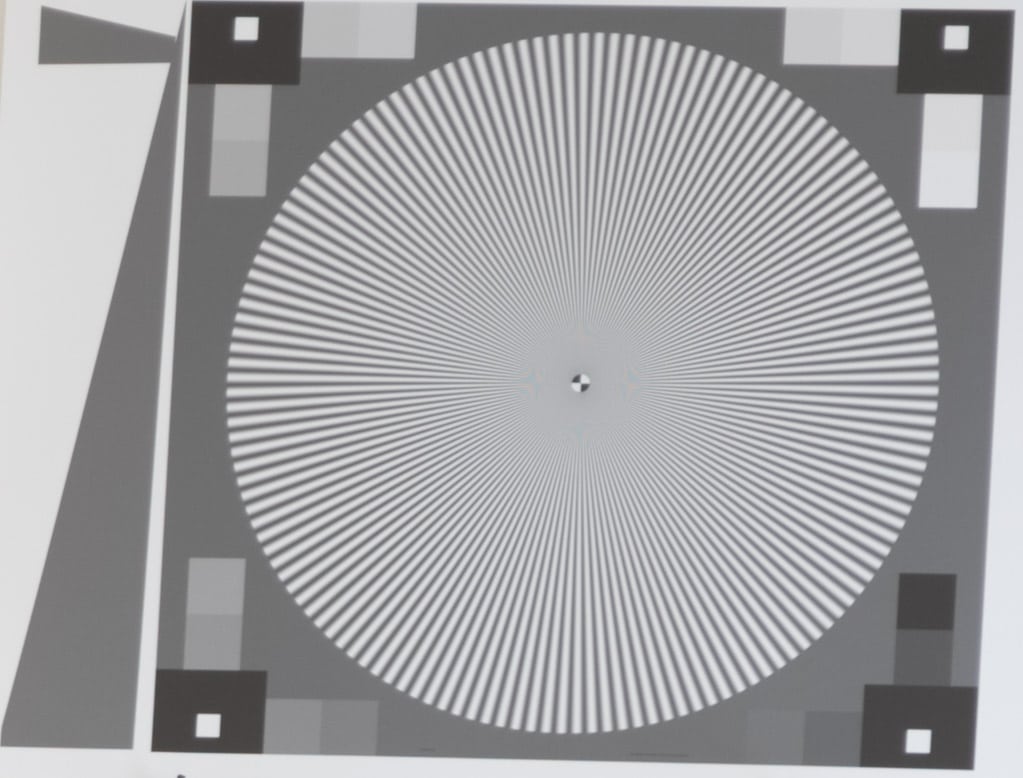
Where did you get the bright red grip?
https://www.dpreview.com/forums/post/62375216
https://www.ebay.com/itm/PEIPRO-Quick-Release-L-shaped-Plate-Holder-Camera-Handheld-for-Fujifilm-GFX-50R-/123627124172
Small Rig sells a nice L-bracket with a wooden handle. I find it comfortable and a handsome addition to the camera. https://www.smallrig.com/smallrig-l-bracket-for-fujifilm-gfx-50r-apl2339.html